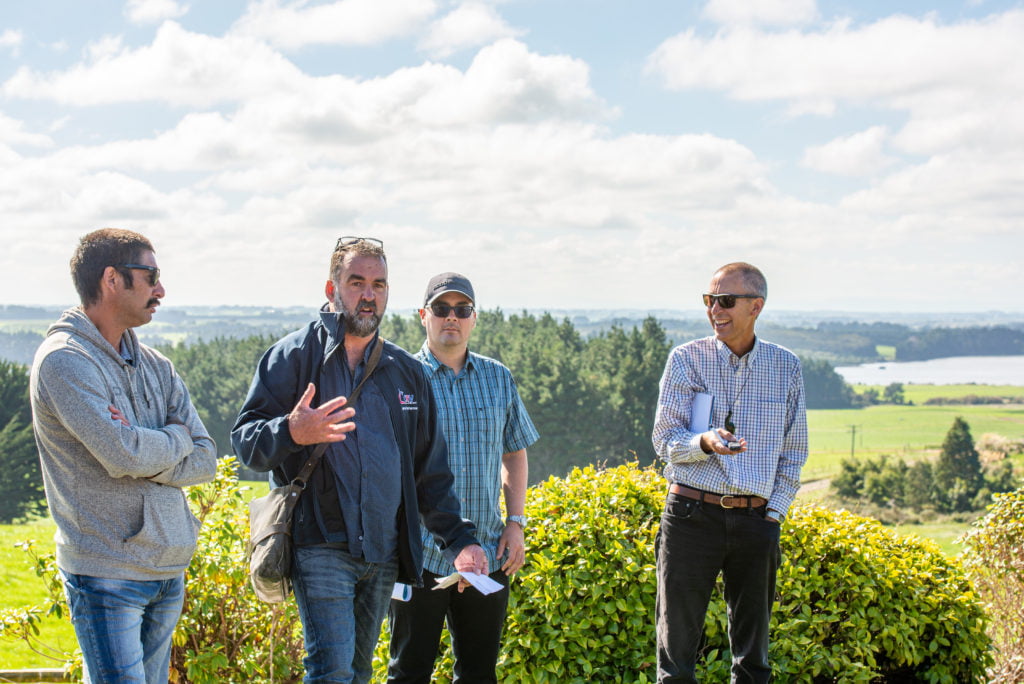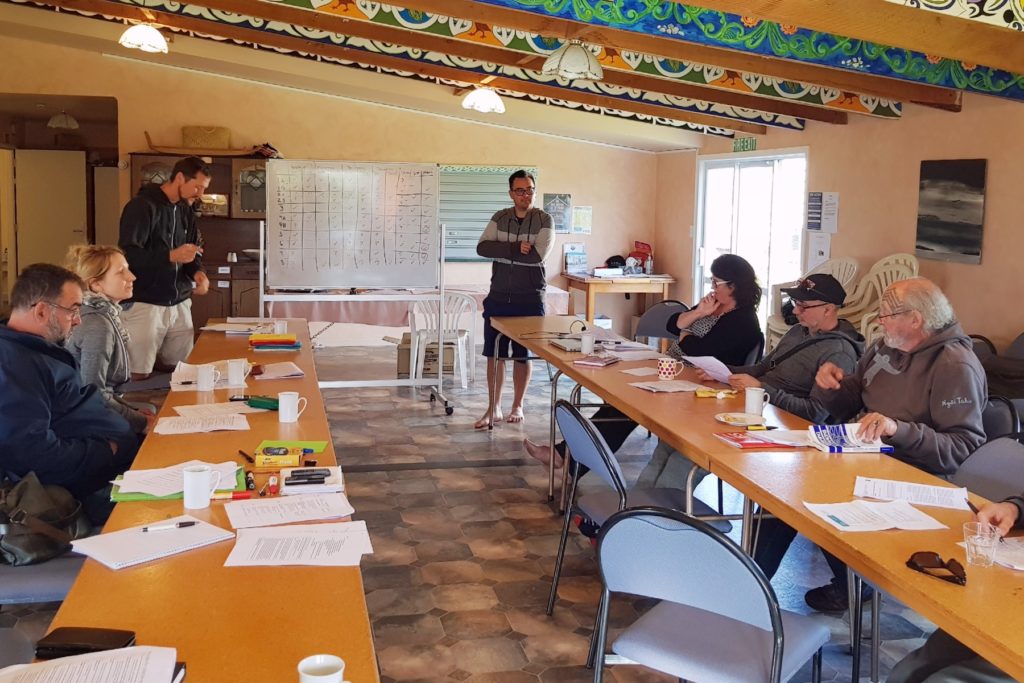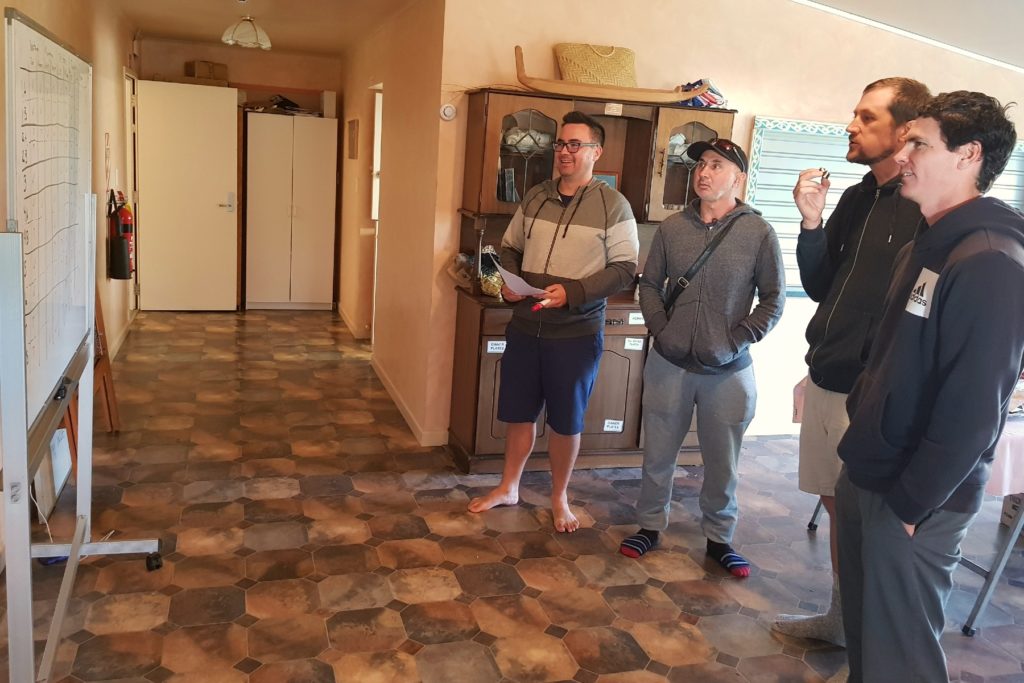Road-Testing Academic Theory with New Zealand Catchment Groups
Does theory translate to action? An exercise with our Catchment Forum group tests whether an influential theory in academic and policy circles is actually useful for people doing the mahi. Researchers Marc Tadaki, Ed Challies, and Margaret Kilvington find the theory needs to be re-interpreted for catchment groups in Aotearoa.
With catchment groups forming across Aotearoa New Zealand to tackle land and water management issues, many people want to know: can these groups benefit from experience in other countries?
As members of a research team studying the development of catchment groups, we are often asked this question. In response, we often find ourselves turning to collective management theory. This body of knowledge draws upon many diverse examples of ‘resource use’ (such as forestry, irrigation water, fisheries) across the globe and identifies 11 general principles that have historically been associated with communities managing ‘resources' sustainably.
(While acknowledging that ‘resources' terminology is problematic, we use it here because collective management theory has been developed based on concepts of extractive resource use – which is partly why we have trouble making it fit our New Zealand context, as we explain below.)
But while collective management theory is influential in academic and policy circles, what we want to know is: are these principles actually useful for groups who are trying to work collectively to address environmental challenges?
In this blog post, we reflect on a recent exercise conducted to examine the usefulness of collective management principles. In our Catchment Forum – which includes researchers and eight catchment group and tangata whenua leaders – we ‘road tested’ the 11 collective management principles to see if they provided helpful guidance.
Collective management principles
When we decided to discuss these principles in the Catchment Forum, however, we quickly realised that the principles were written in academic jargon and inaccessible to most lay people. Therefore, as a first task, we translated the 11 principles into terms that are relevant to catchment groups. The table below shows both the formal and translated versions of the principles.
Forum members worked in two groups to discuss the 11 collective management principles (for which we thought the term “suggestions” was a better descriptor than “principles”). We then regrouped to discuss how the principles applied (or not) to catchment groups, important things that were missed, and how some rewording of the principles might make them more useful.
| # | Cox et al. (2010) | Our translation for discussion |
|---|---|---|
| 1A | Clearly defined boundaries: Individuals or households who have rights to withdraw resource units from the common-pool resource (CPR) must be clearly defined | Everyone who needs to be part of the solution is part of the group |
| 1B | Clearly defined boundaries: The boundaries of the CPR must be well defined | Groups should define the catchment to include all relevant elements and connections (e.g. river, groundwater, estuaries, habitat, wildlife) |
| 2A | Congruence between appropriation and provision rules and local conditions: Appropriation rules restricting time, place, technology, and/or quantity of resource units are related to local conditions | Group goals and actions should be tailored to local environmental conditions and local customs |
| 2B | Congruence between appropriation and provision rules and local conditions: The benefits obtained by users from a CPR, as determined by appropriation rules, are proportional to the amount of inputs required in the form of labor, material, or money, as determined by provision rules | Individual contributions to caring for the river should be proportional to the individual gain from using the catchment |
| 3 | Collective-choice arrangements: Most individuals affected by the operational rules can participate in modifying the operational rules | Group members should be able to modify group goals and actions over time to reflect changing local conditions |
| 4A | Monitoring: Monitors are present and actively audit CPR conditions and appropriator behavior | Actions towards group goals, and the outcomes of those actions, should be monitored |
| 4B | Monitoring: Monitors are accountable to or are the appropriators | The people who monitor actions and progress toward goals (e.g. nitrates, E. coli, tuna numbers) should be accountable to the group |
| 5 | Graduated sanctions: Appropriators who violate operational rules are likely to be assessed graduated sanctions (depending on the seriousness and context of the offense) by other appropriators, officials accountable to these appropriators, or both | When members break agreed rules, there should be harsher punishments for worse offenses |
| 6 | Conflict-resolution mechanisms: Appropriators and their officials have rapid access to low-cost local arenas to resolve conflicts among appropriators or between appropriators and officials | Groups should have low-cost ways to resolve disagreements and maintain group cohesion |
| 7 | Minimal recognition of rights to organize: The rights of appropriators to devise their own institutions are not challenged by external governmental authorities | Government authorities should recognize existing group goals and activities by not overturning or contradicting them |
| 8 | Nested enterprises: Appropriation, provision, monitoring, enforcement, conflict resolution, and governance activities are organized in multiple layers of nested enterprises | To adequately address all parts of the river system, groups should be connected to collectives at other scales or in adjacent places |
Table 1: Collective management principles, and our translation of the principles for relevance to catchment groups. Numbering has been retained from Cox et al. (2010), who took Ostrom’s initial eight principles and then split principles 1, 2, and 4 into two parts each.

Ed and Marc introducing the principles exercise 
Marc, Rio, Ed, and Michael pondering which principles are considered most useful
While collective management theory is influential, are these principles actually useful for groups who are trying to work collectively to address environmental challenges?
What is useful?
Ten of Ostrom’s principles were considered directly relevant to catchment groups by at least one Catchment Forum member. Six principles had four or five ticks, which indicate some level of wider relevance for catchment groups. These six were:
- 1A and 1B: these are about inclusion of all relevant people who can affect the river, and all elements of the river and things that affect its health
- 2A: group goals should be tailored to local conditions and customs
- 3: groups should be able to modify arrangements over time in light of changing conditions
- 4A and 4B: there should be monitoring of the environment and the group’s progress against environmental goals, and those doing the monitoring should be accountable to the group.
What was not useful?
Catchment Forum members found it challenging to say whether any of the 11 were definitively “not relevant,” as they recognised that the principles might apply to groups at different stages than their own. Some identified useful concepts within a principle that they would support if re-worded or modified.
Principle 2B – “Individual contributions to caring for the river should be proportional to the individual gain from using the catchment” – did not receive any ticks for relevance. Although the Catchment Forum agreed this principle refers to a sensible concept of fairness, most disagreed with the idea that this specific definition of fairness is required to progress catchment groups. In their experience, at least at the start, leadership is often required, especially by tangata whenua and catchment group leaders, who put a lot into looking after the river despite benefits being widely shared.
As researchers, we wonder if this might change as a group develops. As a group sets objectives, monitors them, and gains more clarity over what is needed to achieve its goals, tensions could increase if some refuse to contribute. Leaders may be more likely to ‘burn out’ if lack of cooperation from a few is preventing the group from achieving its goals.
What’s missing?
Catchment Forum members identified several elements that seem relevant yet are missing.
- In Aotearoa, any principles for collective management need to be built within a Te Tiriti o Waitangi framework. Collective management initiatives such as catchment groups should seek to uphold those relationships and obligations in their efforts to look after the environment.
- Use of language like natural resources (within the principles themselves) encourages “thinking of the river as a thing” and “the beingness of the awa isn't being recognised.”
- The provision (or lack) of knowledge is key to many farmers and land users wanting to be part of catchment groups. But at the same time, knowledge doesn’t always change decisions or behaviours. Sometimes being part of a collective is about being committed to a group of people irrespective of whether someone accepts or has access to certain information.
- The 11 principles stem from research on collective management of resources that are extracted (e.g., fish, water for irrigation, trees) and where over-consumption leads to direct negative effects on the resource users themselves. This contrasts with the situation of collective water management in Aotearoa, where the effects of pollution and over-extraction are felt by a wider group of people (as well as the environment) and not just those whose actions are affecting the water.

What does this exercise tell us?
The 11 principles generated by collective management theory provided useful prompts for discussion, highlighting important aspects of catchment groups’ journeys such as monitoring actions against agreed objectives and environmental outcomes, and finding low-stakes ways to engage with other members and get them on board.
But at the same time, there were quite a few things our Catchment Forum would tweak, throw out, and add into the mix to make a more fit-for-purpose set of principles for Aotearoa New Zealand. Others (Chapin et al. 2012) have proposed collective management principles for Aotearoa, but those were crafted by researchers rather than by people who are building collectives. As far as we are aware, our exercise is the first attempt to ‘road test’ collective management principles with on-the-ground practitioners.
While we continue to mull over the value of this exercise (we have plans to write these findings up in a paper), we see two types of conclusion unfolding: one theoretical, and one practical.
Our theoretical conclusion
Our theoretical conclusion relates to how emerging catchment groups in Aotearoa are different from the cases usually studied in collective management theory. The theory is mostly based on ‘resources’ such as forestry, irrigation, or fisheries, which are ‘drawn down’ in a way that negatively affects resource users directly. In contrast, with land uses that cause pollution, that pollution affects the wider community and the ecosystem as much as, if not more than, the people who produce the pollution.
Also, the principles of collective management theory apply to cases where ‘resource use’ causing damage is fairly easy to spot and control (such as fishing, cutting down trees). Catchment groups, however, are grappling with diffuse sources of pollution – every land use transforms the landscape in different ways, and there are multiple land uses in a catchment that affect the river.
That means in Aotearoa there is a strong reliance on ‘moral authority’ to encourage people to join the group and to do the right thing. You cannot rely on single-industry regulation, or easily control a single practice such as cutting down trees. So catchment groups in Aotearoa provide an interesting exception to collective management theory, which needs exploring further.
Our practical conclusion
Our practical conclusion is that, while the principles were considered broadly useful by Catchment Forum participants, they were not useful in a prescriptive way. Rather, the discussion of the principles prompted us to think about the ideas behind them. These deeper ideas highlight important issues for catchment groups, which each group needs to develop their own responses to. Remembering that these principles have been widely recognised as elements in the successful management of collective ‘resources’, key questions that could advance the practice of collective management include:
- How can we support facilitated discussions within groups on these principles?
- Are there times when various principles could be most usefully introduced?
- What type of monitoring can help expand a group’s self-awareness, enabling them to see what they are doing well and what they might try next?
More information:
- Collective management theory emerges from the work of the late Nobel prize-winning economist Elinor Ostrom. Ostrom found that, contrary to conventional economic thinking about the tragedy of the commons, communities are able to self-organise to sustainably manage common-pool resources such as fisheries, forests, and irrigation water. She paid close attention to what institutions people set up to monitor the state of the resource, how groups monitored each other’s use of the resource, and how groups enforce (whether formally or informally) agreed rules and practices. Looking across many cases, Ostrom identified how groups were able to successfully sustain the environment through, for instance, developing effective monitoring arrangements. Since Ostrom’s foundational work, her ideas have been developed into their current form of 11 principles.
- New Models of Collective Responsibility research
- Chapin et al. 2012. Design principles for social-ecological transformation toward sustainability: lessons from New Zealand sense of place. Ecosphere 3(5):40.
- Cox et al. 2010. A review of design principles for community-based natural resource management. Ecology and Society 15(4): 38.
- Ostrom, E. (1990). Governing the Commons: The evolution of institutions for collective action. New York: Cambridge University Press.
Author
 View Our Strategy Document 2019 – 2024
View Our Strategy Document 2019 – 2024






Leave a Reply